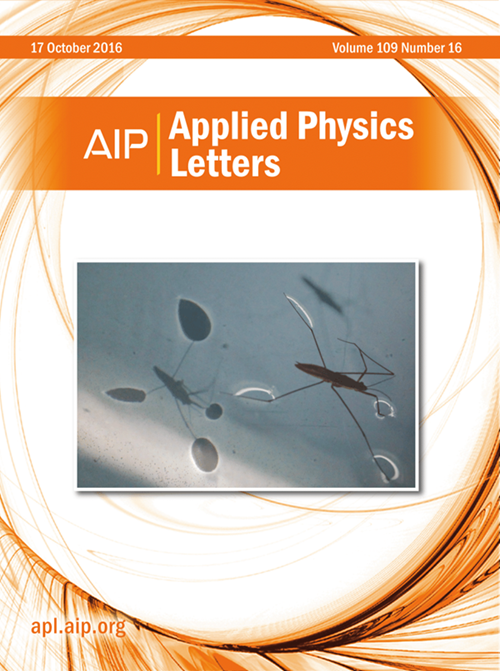以Eu为a位阳离子的硫系钙钛矿能带结构调制
IF 3.5
2区 物理与天体物理
Q2 PHYSICS, APPLIED
引用次数: 0
摘要
具有畸变结构的卤化物包晶(如 BaZrS3 和 SrZrS3)具有高稳定性、强吸收性和优异的电传输特性,是很有前途的光伏材料。研究人员探索了 BaZr1-xTixS3 和 BaZrS3-xSex 合金,以减小它们的带隙,使它们能够吸收低能量光子。然而,BaTiS3 和 BaZrSe3 的六边形结构以及 BaZrS3 中 Ti 或 Se 原子的不相容性导致了这些合金的相分离。在这项研究中,我们以 EuZrS3 和 Sr0.7Eu0.3ZrS3 合金为例,证明了使用 Eu 作为 A 位阳离子可以调整铬化包晶的能带结构。在 EuZrS3 中,Eu 4f 轨道对价带最大值做出了贡献,从而提高了价带,并导致 0.54 eV 的窄带隙。此外,由于 Eu 与 SrZrS3 在结构上和原子上的相容性,Sr1-xEuxZrS3 合金被设计用来微调 SrZrS3 和 EuZrS3 的能带结构。EuZrS3 还表现出典型的半导体特性,使其有望成为潜在的光电器件。本文章由计算机程序翻译,如有差异,请以英文原文为准。
Band structure modulation of chalcogenide perovskite with Eu as A-site cation
Chalcogenide perovskites with distorted structures, such as BaZrS3 and SrZrS3, are promising photovoltaic materials due to their high stability, strong absorption, and excellent electrical transport properties. Researchers have explored BaZr1-xTixS3 and BaZrS3-xSex alloys to reduce their band gaps, allowing them to absorb lower-energy photons. However, the hexagonal structures of BaTiS3 and BaZrSe3, along with the incompatibility of Ti or Se atoms in BaZrS3, lead to phase separation in these alloys. In this work, using EuZrS3 and Sr0.7Eu0.3ZrS3 alloys as examples, we demonstrate that the band structure of chalcogenide perovskites can be tuned by using Eu as the A-site cation. In EuZrS3, the Eu 4f orbitals contribute to the valence band maximum, thereby raising the valence band and resulting in a narrow bandgap of 0.54 eV. Furthermore, due to the structural and atomic compatibility of Eu with SrZrS3, the Sr1-xEuxZrS3 alloy is designed to fine-tune the band structures of both SrZrS3 and EuZrS3. EuZrS3 also exhibits typical semiconducting characteristics, making it promising for potential optoelectronic devices.
求助全文
通过发布文献求助,成功后即可免费获取论文全文。
去求助
来源期刊

Applied Physics Letters
物理-物理:应用
CiteScore
6.40
自引率
10.00%
发文量
1821
审稿时长
1.6 months
期刊介绍:
Applied Physics Letters (APL) features concise, up-to-date reports on significant new findings in applied physics. Emphasizing rapid dissemination of key data and new physical insights, APL offers prompt publication of new experimental and theoretical papers reporting applications of physics phenomena to all branches of science, engineering, and modern technology.
In addition to regular articles, the journal also publishes invited Fast Track, Perspectives, and in-depth Editorials which report on cutting-edge areas in applied physics.
APL Perspectives are forward-looking invited letters which highlight recent developments or discoveries. Emphasis is placed on very recent developments, potentially disruptive technologies, open questions and possible solutions. They also include a mini-roadmap detailing where the community should direct efforts in order for the phenomena to be viable for application and the challenges associated with meeting that performance threshold. Perspectives are characterized by personal viewpoints and opinions of recognized experts in the field.
Fast Track articles are invited original research articles that report results that are particularly novel and important or provide a significant advancement in an emerging field. Because of the urgency and scientific importance of the work, the peer review process is accelerated. If, during the review process, it becomes apparent that the paper does not meet the Fast Track criterion, it is returned to a normal track.
 求助内容:
求助内容: 应助结果提醒方式:
应助结果提醒方式:


